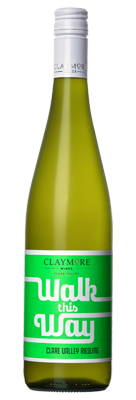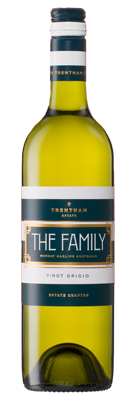Filter by
- An aromatic Marlborough classic from the good, even great, Doctor John Forrest.$32.00 RRPfrom $24.99 when you mix 12+
- 93pts Clare Valley Riesling with “excellent fruit purity” (Wine Orbit) from dynamic Claymore.$22.00 RRPfrom $17.99 when you mix 12+
- “Splendidly long and mouth-watering...”(Wine Orbit) 95pt Riesling from the great Knappstein estate.$25.00 RRPfrom $19.99 when you mix 12+
- A gorgeous, frequent Gold-winning blend from the Pig family. Made for Spring and Summer sipping.$24.00 RRPfrom $13.99 when you mix 12+
- Very nicely balanced and super-refreshing Adelaide Hills Sauvignon Blanc.$25.00 RRPfrom $19.99 when you mix 12+
- Stunning value, luxurious Chardonnay exclusive, with Gold, from New Zealand's premium Hawke's Bay.$35.00 RRPfrom $28.99 when you mix 12+
- One of the Clare Valley's most iconic Rieslings with multiple scores of 93-95pts!$28.00 RRPfrom $23.99 when you mix 12+
- "Long and refined" (Wine Orbit), 94pt Chardonnay from the dynamic and colourful Claymore team.$24.00 RRPfrom $18.99 when you mix 12+
- Freshly landed, seductive, textural Pinot Grigio from Hunter born-and-bred Aaron Mercer.$26.00 RRPfrom $21.99 when you mix 12+
- $28.00 RRPfrom $21.99 when you mix 12+
- Bright, lemon fresh, creamy edged and Gold-winning once again.$30.00 RRPfrom $21.99 when you mix 12+
- Fabulously fresh, lime and guava-zipped Marlborough Sauvignon – the 2023 vintage is pure refreshment$24.00 RRPfrom $21.99 when you mix 12+
- A beautifully crafted classic Hunter Semillon from a master of the art!$25.00 RRPfrom $21.99 when you mix 12+
- "Small in price but big in Grigio personality...91pts. Great Value" (Halliday)$18.00 RRPfrom $17.99 when you mix 12+
- Refresh yourself thoroughly with a beautifully poised Victorian Riesling.$25.00 RRPfrom $21.99 when you mix 12+
- Fruit-filled and fresh Albariño that breaks boundaries, crafted by a daring, 5-star winemaker$32.00 RRPfrom $24.99 when you mix 12+
- Refresh yourself with this bright, citrus-charged Clare Valley Semillon.$24.00 RRPfrom $17.99 when you mix 12+
- Elegant, bright Chardonnay from prized Barossa vineyards.$25.00 RRPfrom $15.99 when you mix 12+
- 95pts, Gold, 93pts... a triumphant vintage again for this fresh, distinctive Barry original.$40.00 RRP$32.99 when you mix 12+
- This rare Garnacha Blanca from Navarra is like sunshine in a glass!$22.00 RRPfrom $14.99 when you mix 12+
- New vintage, rich and luscious, heroic Pinot Gris from the talented Peter Logan.$24.00 RRPfrom $19.99 when you mix 12+
- Definitive Aussie white offering refreshing fruit, effortless enjoyment and a great price.$18.00 RRPfrom $11.99 when you mix 12+
- Brilliant, bright Sauvignon Blanc from South Australia’s fertile Limestone Coast.$22.00 RRPfrom $16.99 when you mix 12+
- Deliciously refreshing and pure Suvignon from highly respected McLaren Vale Vignerons.$22.00 RRPfrom $19.99 when you mix 12+
Wine FAQs
What is dry white wine?
Dry white wine is a style of wine that contains very little or no residual sugar, meaning it doesn’t taste sweet.
Popular dry white wines include Chardonnay, Sauvignon Blanc, Pinot Grigio, Chenin Blanc and Riesling.
Dry white wines come in various styles, from light and crisp to full-bodied. They often have fruit flavours ranging from citrus and orchard fruits (like apple and pear) in cooler climate wines to tropical fruits (like mango and pineapple) in warmer climate wines.
Other common flavours in dry white wines include floral, herbal and mineral notes. Some dry white wines may develop additional flavours when aged in oak barrels.
Dry white wines are often characterised by high acidity, giving them a refreshing taste, which makes them food-friendly. They pair well with many foods, including chicken, seafood, salads and light pasta dishes.
How is dry white wine made?
Making dry white wine starts in the same way as with any white wine. Once the wine grapes have been harvested, they’re crushed, and the juice is separated from the skins and seeds.
Under controlled temperatures, yeast is added to the grape juice and the mixture is left to ferment. The yeast consumes the natural sugars in the grape juice, converting them into alcohol. For dry white wines, little to no residual sugar remains after fermentation. Wines with slight residual sugar of roughly 4-12 grams per litre are typically classified as ‘off-dry’.
Once the fermentation process is complete, a maturation stage can begin, which involves the wine being stored in either steel tanks or oak casks for a period ranging from a few months to years. Steel tanks offer limited oxygen contact, helping to maintain the wine’s freshness. Oak casks are porous and allow in a small amount of oxygen, so the wine can develop secondary flavours and textures, enhancing its complexity.
What are the most popular dry white wines?
Many delicious dry white wines are made in Australia and around the world. Here are some of the most popular wines:
- Sauvignon Blanc is a light-to-medium-bodied wine best known for its zippy acidity and floral, zesty citrus, green and tropical fruit flavours – look for green apple, pear and passion fruit notes. The wines are also known for their distinctive herbaceous aroma.
- Chardonnay is a medium-to-full-bodied white wine originating from the Burgundy region of France. It can be made in various styles depending on the region and winemaking techniques. Its flavours range from zesty citrus with a distinct minerality to rich tropical fruits with a creamy texture. Sweeter aromas of vanilla and butter can develop if the wine is aged in oak barrels. Some of the best Australian Chardonnay wines hail from Hunter Valley, Adelaide Hills, Yarra Valley and Margaret River.
- Chenin Blanc dry white wines are medium-bodied and known for their lean style and high acidity. They have tart flavours of pear, quince and ginger and aromas of green apple and chamomile.
- Albariño is a dry, aromatic white wine with high acidity and citrus and stone fruit flavours, often with a subtle saline note. It’s native to Spain and Portugal, where it’s known as Alvarinho.
- Pinot Grigio is a light-to-medium-bodied white wine with refreshing pear and citrus flavours and delicate blossom aromas, including jasmine and honeysuckle.
- Grüner Veltliner is an Austrian grape variety that has found a home in the cool-climate region of Adelaide Hills in South Australia. It produces dry, highly acidic white wines with citrus, nectarine and white pepper flavours, with hints of green herbs.
- Riesling can be made in dry to lusciously sweet styles. Dry Rieslings, particularly those from regions like Clare Valley and Eden Valley in Australia or Alsace in France, are known for their high acidity, floral aroma, and flavours of lime, mineral and green apple.
What foods pair well with dry white wine?
Thanks to their high acidity and broad spectrum of flavours, dry white wine is very versatile when paired with food. Try these delicious ideas:
- Light pasta dishes – Dry whites like Pinot Grigio pair well with pasta, especially those with cream sauces, as their acidity cuts through any heaviness.
- Poultry and pork – Chardonnay, especially those with a bit of oak ageing, can stand up to rich, flavourful dishes such as roast chicken, turkey or pork.
- Seafood – Light, crisp dry white wines such as Sauvignon Blanc or Pinot Grigio pair well with delicate seafood dishes, including raw oysters, shrimp cocktail or a white fish ceviche.
- Vegetarian dishes – The high acidity and citrus qualities in dry white wines work wonderfully with salads, grilled vegetables or vegetable-based dishes. Many dry white wines have complementary herbaceous, citrus, or green fruit flavours.
Feel free to experiment and find your own favourite combinations!
How to serve dry white wine
Dry white wines reveal their full flavours when served cool but not overly chilled. Typically, they are best served between 7-13°C.
Serve these wines in a standard white wine glass. These glasses have a slender bowl, which limits the wine’s oxygen exposure. They also feature high sides with a narrow rim, designed to concentrate the wine’s aromas. Remember to hold the glass by the stem, so the heat from your hands doesn’t warm the wine.
How long does dry white wine last after opening?
Once opened, dry white wine typically stays fresh for about 3 to 5 days. The key to making it last is to limit the wine’s exposure to air once the bottle is opened. Here are a few tips to help extend its freshness:
- Seal the bottle tightly after each pour. A wine stopper helps create a firm seal.
- After opening, store the bottle upright. This minimises the surface area of wine exposed to oxygen, slowing the oxidation process.
- Keep the bottle in the fridge, but remember to take it out about 15-30 minutes before drinking so it can reach the correct serving temperature.



























